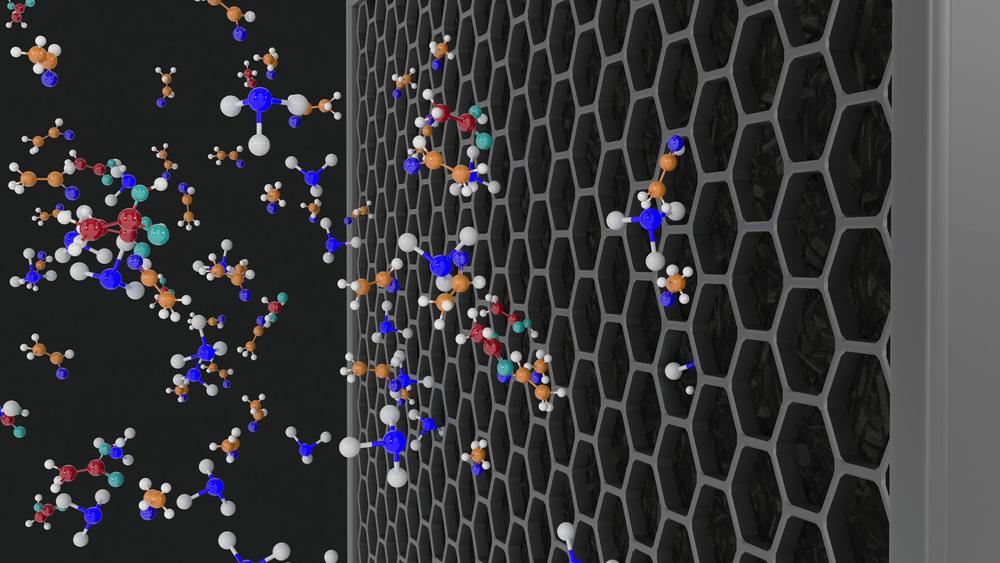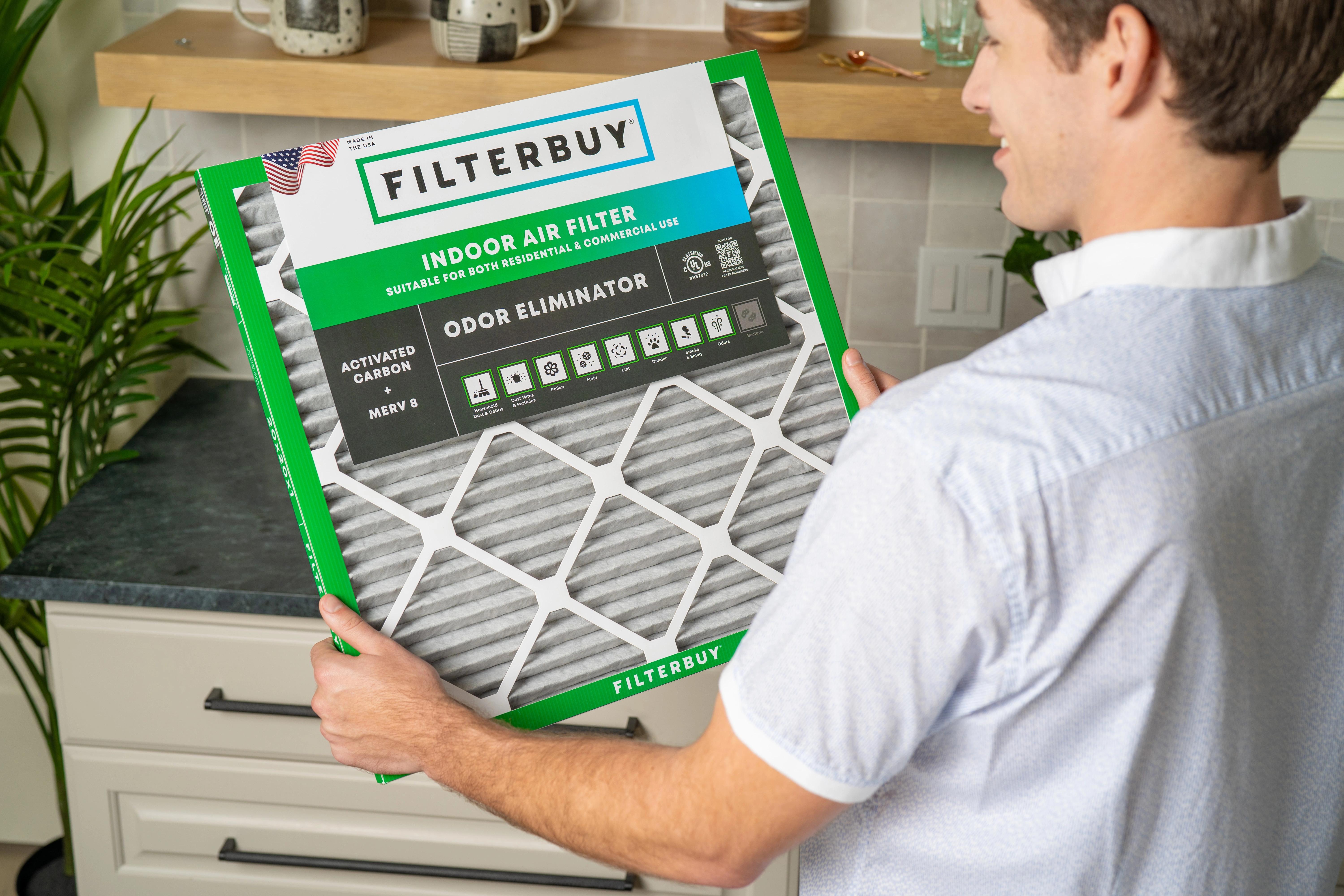Shop by

Your home should be more than just walls and windows—it should be a sanctuary where every breath feels fresh and clean. But lurking in the air are VOCs, those sneaky volatile organic compounds that seem invisible but carry big risks. Here's where activated carbon filters come into play. Through the intricate dance of adsorption, these filters don't just catch VOCs; they grip them, like a magnet pulling metal, locking them into place within their porous structure. And with a regularly refreshed filter, you'll keep those VOCs at bay, ensuring your space is a haven of healthy air.
The real question is, do carbon filters remove VOCs with precision? The secret is in the science. Activated carbon locks VOCs in place, serving as an invisible guardian against harmful pollutants. Let's uncover how this powerhouse technology quietly purifies your air, making a world of difference in your indoor environment.
Activated carbon filters are the silent champions of indoor air, capturing pollutants and VOCs with precision. Through a process called adsorption, these filters pull harmful particles onto their carbon surfaces, removing them from your living or working environment. It's a powerful, invisible defense against air pollution.
However, their power isn't everlasting. In spaces with heavy pollution, carbon filters work overtime and need frequent replacements. Signs like weakened airflow or lingering odors hint that it's time for a swap, ensuring the air stays clean and fresh.
Quality matters when it comes to activated carbon. The denser the carbon content, the more effective the filter, but that also means a higher price tag. Finding the right balance between quality and budget is key to maintaining long-term air purity.
The real reward? Carbon filters don't just tackle odors—they trap the VOCs that quietly compromise your air. In both homes and offices, a well-maintained carbon filter becomes a game-changer, reshaping your environment into one filled with cleaner, safer air.

VOCs have a sneaky way of entering your home, often from everyday items. That lingering scent from paints, varnishes, or cleaning products? It's VOCs being released into the air, even when those items are stored away. What you can't see or smell still hangs in the air long after use.
Even the furniture around you isn't innocent. New carpets, pressed wood cabinets, and certain building materials release VOCs like formaldehyde, filling the air with invisible contaminants. That "new" smell is more than meets the nose.
Outdoor pollutants also find their way indoors. Vehicle exhaust and industrial fumes easily slip through open windows and doors or hitch a ride through ventilation systems, silently blending with indoor air.
To cut down on VOCs, increase ventilation, especially around products known for off-gassing. Opt for low-VOC or no-VOC alternatives, and always follow safety guidelines. Knowing where VOCs come from is your first defense in reclaiming cleaner air.
VOCs aren't just drifting through the air unnoticed—they're stealthy saboteurs, messing with your health at every turn. At first, they irritate your eyes, nose, and throat, delivering headaches and dizziness like unwelcome guests. But stick around too long, and they set their sights on bigger targets—your liver, kidneys, and nervous system.
But it's not just your body under attack. VOCs creep into your mind, leaving you foggy, unfocused, and off balance. Suddenly, simple tasks feel draining, and your energy fades, as these silent offenders chip away at your day, turning life into a cycle of frustration and exhaustion.
Not all VOCs are equally harmful, but identifying the most toxic is key. Minimizing exposure is crucial—improve ventilation, choose low-VOC products, and consider air purifiers with activated carbon filters to reclaim cleaner, healthier air.
Activated carbon filters are like VOC magnets, drawing in harmful compounds from the air and locking them down. Their secret lies in adsorption, a process that grabs onto VOC molecules and traps them on the carbon's surface, creating a cleaner, fresher environment with each pass of air.
Unlike a sponge soaking up water, these filters work on a molecular level, using a vast network of tiny pores to maximize surface area. Each pore becomes a mini-guardian, capturing VOCs and preventing them from circulating back into your space.
But even these filters have their limits. As they fill up with pollutants, their efficiency dips, signaling the need for a replacement. Maintaining that steady flow of clean air means knowing when to swap out the filter, ensuring it continues to work its magic.
Choosing the right air purifier is less of a puzzle and more of a matchmaker's art. It's about syncing your space with the perfect system—just like finding the right tool that fits your hand effortlessly, ready to tackle exactly what's needed.
Start by understanding the filter types. Each one tackles different air pollutants: activated carbon filters are your go-to for capturing pesky VOCs, HEPA filters shine when dealing with tiny dust particles, and UV filters act like a germ zapper, neutralizing bacteria and viruses. The key is knowing what you're up against in your space.
Then, there's the art of placement. If VOCs are coming from a specific spot—like that new couch—position the purifier nearby. But for an overall air refresh, placing it in a central room gives it the range to cleanse your entire space.

Activated carbon filters are one of the most effective ways to remove volatile organic compounds (VOCs) from the air. Their large surface areas and porous structures help trap and absorb VOCs. Additionally, improving ventilation by opening windows and using air purifiers with HEPA filters can reduce indoor VOC levels.
Yes, activated charcoal efficiently absorbs VOCs from the air. Its porous structure allows it to capture a variety of organic chemicals, improving indoor air quality.
Activated carbon filters are the most effective at removing VOCs from the air. These filters use activated charcoal to adsorb and trap VOCs, reducing their concentration indoors.
Yes, a carbon filter can effectively remove paint fumes containing VOCs. The activated carbon in the filter adsorbs the VOCs, preventing them from circulating in the air.
Yes, carbon filters are highly effective at removing VOCs. Their activated carbon has a large surface area and porous structure, and it efficiently adsorbs and traps VOCs.
Yes, VOCs can be filtered out using activated carbon filters. These filters adsorb and trap VOCs, helping to reduce their levels in indoor air.
Carbon filters remove contaminants, including VOCs, odors, and gaseous pollutants. The activated carbon adsorbs these substances, significantly reducing airborne particles.
To minimize exposure to VOCs, you can:
Use activated carbon filters to adsorb VOCs.
Increase ventilation by opening windows and using exhaust fans.
Choose low-VOC or VOC-free products for household use.
MERV filters are primarily designed to capture particles like dust, pollen, and mold spores. Activated carbon filters are more effective for VOC removal.
Yes, activated carbon filters can remove formaldehyde by adsorbing and trapping the molecules, preventing them from circulating indoors.
No, vinegar does not absorb VOCs. While it may help eliminate odors, it lacks the adsorption properties needed to remove VOCs from the air.
You can use a portable VOC detector or an air quality monitor to test VOC levels at home. Consider hiring a professional indoor air quality testing service for a more thorough assessment.